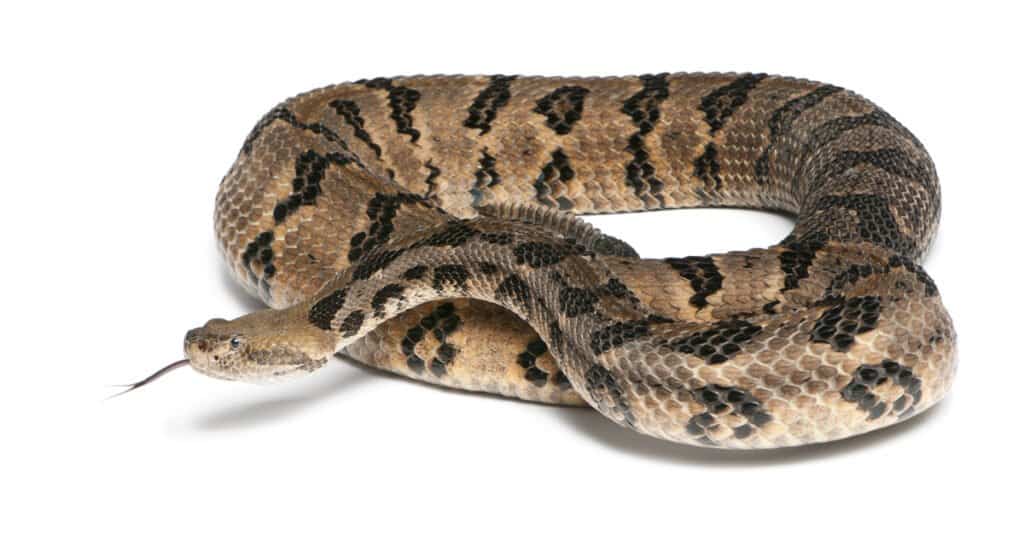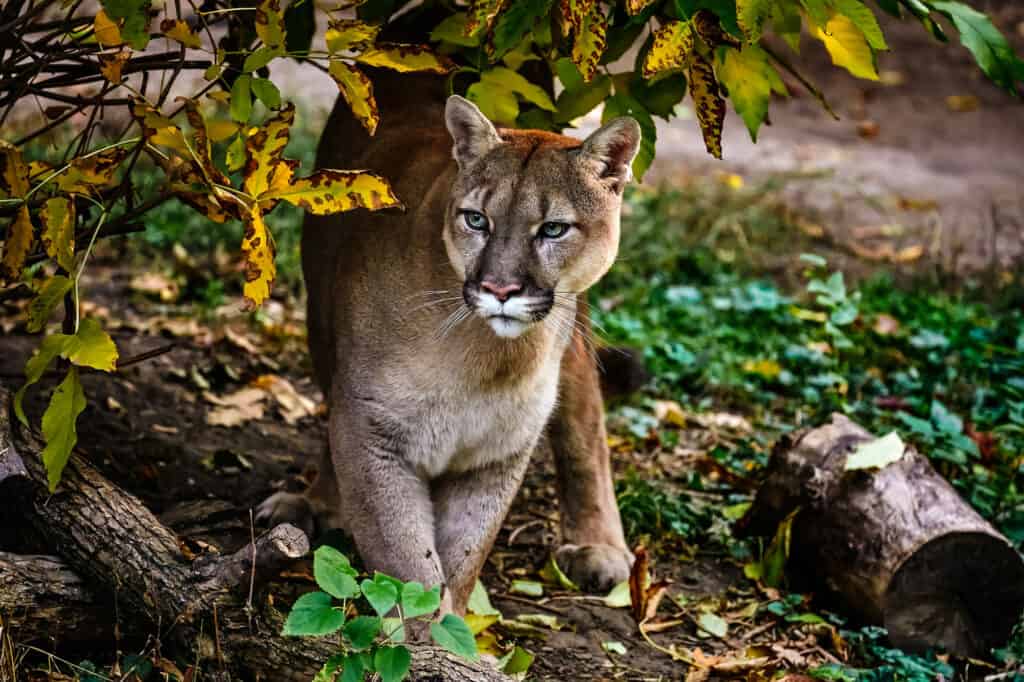“What did the buffalo say to his son when he went off to college?”
“Bison.”
What better way to introduce dangerous animals in Kansas than with a cheesy joke about their state animal? Although buffalo and bison are commonly interchanged, bison refers to the animals that live in North America while buffalo (think water buffalo and cape buffalo) are from Africa and Asia. Bison herds can be found in multiple areas of Kansas including the Buffalo Bill Cultural Center in Oakley (technically “Bison Bill” for those who are tracking), Finney County Historical Museum in Garden City and the Sandsage Bison Range in Garden City. The Sandsage range has the oldest public heard in Kansas. Bison clearly live in Kansas but are they dangerous? What other animals in Kansas pose a threat? Are there any venomous animals in Kansas? What about large predators like wolves, bears and mountain lions? Let’s find out about some of the most dangerous animals in Kansas.
Are Bison the Most Dangerous Animals in Kansas?
Bison are the largest land mammal in the Western Hemisphere. Really? What about moose? Bison are larger than moose! Bison can get up to six feet tall at their hump and weigh up to 2,000 pounds! Moose are pretty large too reaching almost 5 feet tall and weighing around 1,200 pounds. There are not native moose in Kansas although there have been a couple sightings of moose that have wandered across the border from neighboring states. Back to the bison, with 2,000 pounds of weight and two large horns you can understand why they could be dangerous. Especially during mating season when the bulls can get pretty aggressive. The Yellowstone National Park Service (Wyoming, Idaho, and Montana) recommends everyone stay at least 25 yards away from bison as a precaution. They can turn surprisingly quickly, put their head down and charge at you. There are videos of people being attacked by bison, being thrown in the air by their massive horns and being trampled, so they are not to be messed with. Statistics from Yellowstone National Park which has a large bison population reports that between 2000 and 2015, 25 people were injured by bison in Yellowstone. There have not been any reported bison attacks in Kansas. The park Service for the Tallgrass Prairie National Preserve in Kansas recommends maintaining a distance of 125 yards while hiking and never run through a bison pasture, which are all great tips to enjoying these animals from a safe distance.

American bison are the largest land animals in the Western Hemisphere, weighing up to 2,000 pounds.
©iStock.com/Jillian Cooper
Are There Any Venomous Snakes in Kansas?
The timber rattlesnake is the most venomous snake in the Midwest, and they do live in Kansas, but only in the eastern fourth of the state. If you did get bitten by a timber rattler and sought medical attention it is extremely unlikely that you would die. In the U.S. there are 5,000-7,000 reported snake bites with only an average of five fatalities per year. Other venomous snakes that can be found in Kansas are the copperhead, which are the most common venomous snake but have a weak venom. Massasauga snakes are more common in central Kansas and are a smaller snake. Prairie rattlers (or western rattlers) are only found in the western part of the state. Most snake bites occur when people either surprise a snake or try to handle them. Do not try to pick up a snake, especially if you are unsure of what species it is.

The timber
rattlesnake
is the most venomous snake in Kansas.
©Eric Isselee/Shutterstock.com
What About Bears, Mountain Lions and Wolves, Are These the Most Dangerous Animals in Kansas?
According to the Kansas Department of Wildlife and Parks “There is no evidence of an established wild population [of black bear] living in Kansas.” So, bears are not a threat in Kansas. There was a bear sighting in 2015 in Galena, Kansas in Cherokee County but it was a bear that had probably just wandered into the state from Missouri or Arkansas, not trying to relocate.
What about mountain lions? There have been confirmed sightings of mountain lions but there is not a large population. In 2019 a group of bird hunters shot and killed a mountain lion while they were out hunting. Mountain lions can grow to be 130 -150 pounds but the one they killed was 114 pounds.
What about wolves? There used to be a healthy population of gray wolves in Kansas before the early 1900’s but they have been extirpated (no longer exist naturally) from Kansas since then. The first documented wolf in Kansas since the early 1900’s was shot in December 2012 when a group of hunters mistook it for a coyote.

Mountain lions typically weigh between 130 and 150 pounds.
©Evgeniyqw/Shutterstock.com
Now That You Mention Coyotes, Are Coyotes One of the Most Dangerous Animals in Kansas?
Coyotes do live in Kansas, and they even live in Kansas City. A recent news story shared how one woman heard barking and went out to check to see if her neighbor’s dog had gotten out but when she opened the door she saw a coyote not far from her front door. Coyote sightings are somewhat common in the Kansas City area but coyotes are not out to get humans. The news article says that coyotes are more interested in rabbit-sized animals, so yes, your small pets are at risk, but no, they rarely attack humans. If you do encounter a coyote you are supposed to “act big” — raise your arms and make a lot of noise to scare them away. Be sure to not leave food out or open trash bins that may attract coyotes because they can become a threat if they get too used to human interactions. Remember that coyotes are relatively small, not getting much bigger than 15-50 pounds. And because they are highly adaptive, they are probably here to stay so we will need to learn how to coexist with them.

Coyotes are predators that frequently prey upon small dogs and cats.
©Mircea Costina/Shutterstock.com
Up Next
The photo featured at the top of this post is © Jack Dykinga, Public domain, via Wikimedia Commons – License / Original
Thank you for reading! Have some feedback for us? Contact the AZ Animals editorial team.






